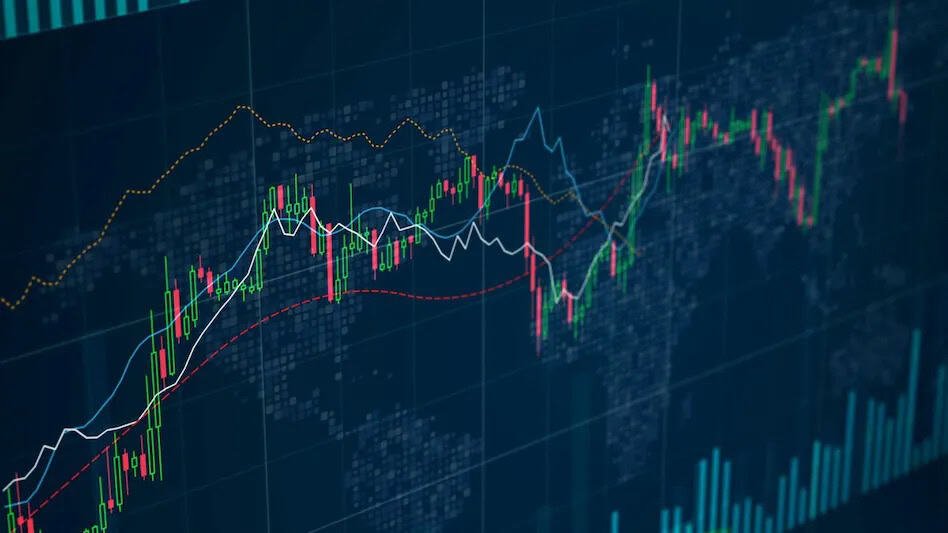Understanding market trends is essential for making informed investment decisions. Whether you’re a novice investor or looking to refine your approach, mastering the art of trend analysis can significantly improve your investment outcomes. This guide breaks down professional-level techniques for analyzing stock market trends across different timeframes and market conditions.
Understanding Market Trends: The Fundamentals
Types of Market Trends
Market trends typically fall into three categories:
- Bullish (Uptrend): Characterized by higher highs and higher lows, indicating positive momentum
- Bearish (Downtrend): Characterized by lower highs and lower lows, signaling negative momentum
- Sideways (Consolidation): Price moves within a defined range, indicating market indecision
Timeframe Considerations
Trends exist across multiple timeframes simultaneously:
- Long-term trends: Spanning years or decades, reflecting fundamental economic and business cycles
- Intermediate trends: Lasting several months to a couple of years
- Short-term trends: Spanning days to weeks, often influenced by news events and market sentiment
- Intraday trends: Occurring within trading sessions, primarily relevant for active traders
Professional analysts recognize that different timeframes can reveal different trends for the same asset, creating a complex, layered picture that requires careful interpretation.
Technical Analysis: Reading the Market’s Language
Price Action Analysis
Price action—the movement of price over time—forms the foundation of technical analysis. Key techniques include:
Chart Patterns
Experienced analysts recognize patterns that often signify continuation or reversal:
- Continuation patterns: Flags, pennants, and triangles suggest the existing trend will resume after a pause
- Reversal patterns: Head and shoulders, double tops/bottoms, and rounding patterns signal potential trend changes
Support and Resistance
These price levels—where buying or selling pressure has historically been strong—often act as barriers or launching points for price movements:
- Static levels: Historical price points where markets repeatedly react
- Dynamic levels: Moving averages, trend lines, and Fibonacci retracements that change over time
- Psychological levels: Round numbers (like $100, $50) that often influence market behavior
Trend Indicators
Professional traders typically employ a combination of indicators rather than relying on any single one:
Moving Averages
Simple but powerful, moving averages smooth price data to highlight trends:
- Simple Moving Average (SMA): Equal weight to all price points
- Exponential Moving Average (EMA): Greater weight to recent prices
- Moving Average Convergence Divergence (MACD): Reveals changes in momentum and trend direction
Oscillators
These indicators help identify potential turning points:
- Relative Strength Index (RSI): Measures the speed and magnitude of price movements
- Stochastic Oscillator: Compares closing price to price range over a specific period
- Rate of Change (ROC): Measures the percentage change in price over a defined period
Volume Analysis
Price movements gain credibility when supported by volume:
- Volume Confirmation: Strong trend movements typically show increased volume
- Volume Divergence: Decreasing volume during price increases or decreases may signal trend weakness
- Volume Profile: Analyzing trading volume at specific price levels helps identify significant support/resistance zones
Fundamental Analysis: Understanding the Drivers
Economic Indicators
Professionals track these macro factors that influence overall market direction:
- GDP Growth: Overall economic health
- Inflation Rates: Impact on purchasing power and interest rates
- Employment Data: Indicator of economic strength
- Interest Rate Policy: Central bank decisions affecting borrowing costs
- Leading Indicators: Manufacturing data, housing starts, and consumer sentiment
Sector Analysis
Different sectors respond differently to economic conditions:
- Cyclical vs. Defensive Sectors: Understanding which sectors typically outperform during various economic stages
- Sector Rotation: Tracking capital flows between sectors as economic conditions evolve
- Industry-Specific Metrics: Monitoring metrics unique to each sector (e.g., same-store sales for retail, net interest margin for banks)
Company Fundamentals
While analyzing broad market trends, professionals don’t lose sight of company-specific factors:
- Earnings Growth: Consistent earnings growth often drives long-term price appreciation
- Valuation Metrics: P/E ratios, PEG ratios, and price-to-book compared to historical norms and industry peers
- Cash Flow Analysis: Focusing on free cash flow generation and allocation
- Competitive Positioning: Market share trends and barriers to entry
Market Sentiment: Gauging Investor Psychology
Sentiment Indicators
Professionals use these tools to measure market psychology:
- VIX (Volatility Index): Often called the “fear gauge,” high readings suggest market anxiety
- Put/Call Ratio: Measures options activity, with high put volume indicating bearishness
- Margin Debt Levels: Elevated levels may indicate excessive optimism
- Fund Flows: Direction of capital movement into or out of markets
Contrarian Analysis
Sometimes the crowd is wrong, especially at extremes:
- Extreme Readings: Sentiment indicators at historical extremes often signal potential reversals
- Media Coverage: Excessive bullishness or bearishness in financial media can signal turning points
- Institutional Positioning: Monitoring what professional money managers are doing, sometimes to do the opposite
Integrating Multiple Approaches: The Professional Edge
Multi-Timeframe Analysis
Professionals examine trends across timeframes before making decisions:
- Top-down Approach: Starting with long-term trends, then drilling down to shorter timeframes
- Confluence of Signals: Looking for agreement across timeframes
- Conflicting Signals: Understanding what mixed signals across timeframes might indicate
Correlation Analysis
Markets and assets don’t exist in isolation:
- Inter-market Analysis: Relationships between stocks, bonds, commodities, and currencies
- Sector Correlations: How different sectors move in relation to each other
- Global Market Relationships: How international markets influence domestic trends
Developing a Process-Driven Approach
Professional analysis is systematic rather than random:
- Consistent Methodology: Using the same analytical process regardless of market conditions
- Regular Review Periods: Scheduled reassessment of market trends
- Journaling: Documenting analysis and decisions to refine the process over time
Risk Management: Protecting Capital While Following Trends
Position Sizing
Professionals adjust position sizes based on:
- Trend Strength: Larger positions for stronger, confirmed trends
- Volatility: Smaller positions in highly volatile conditions
- Conviction Level: Sizing based on confluence of supporting evidence
Setting Stop Losses
Protecting capital when trends reverse:
- Technical Stops: Based on support/resistance, moving averages, or maximum acceptable loss
- Time Stops: Exiting if expected trend development doesn’t occur within a specific timeframe
- Volatility-Based Stops: Adjusting stop distances based on market volatility measures
Practical Implementation: Developing Your Trend Analysis System
Creating a Personalized Dashboard
Professionals typically create customized monitoring systems:
- Core Indicators: 3-5 primary tools that align with your trading style
- Supplementary Indicators: Secondary confirmations used selectively
- Market Breadth Metrics: Tools to gauge overall market health (advance/decline line, percentage of stocks above moving averages)
Establishing a Routine
Consistency is key to professional analysis:
- Daily Review: Quick assessment of market conditions
- Weekly Deep Dive: More thorough trend analysis across timeframes
- Monthly Perspective Check: Reviewing longer-term trends and adjusting strategy as needed
Continuous Improvement
Professionals never stop refining their approach:
- Backtesting: Testing methods against historical data
- Performance Tracking: Monitoring which analytical methods yield the best results
- Adapting to Changing Markets: Recognizing when market character changes require adjustments to your approach
Conclusion: The Path to Professional-Level Analysis
Analyzing market trends like a professional requires a blend of technical skill, fundamental understanding, psychological awareness, and disciplined execution. While markets will always contain an element of unpredictability, a structured analytical approach significantly improves your ability to identify profitable opportunities while managing risk.
Remember that even the most successful professionals don’t predict market movements with perfect accuracy. Instead, they develop systematic methods to identify high-probability scenarios, manage risk accordingly, and continuously refine their approach based on results. By incorporating these professional-level techniques into your own investment process, you’ll be better equipped to navigate market trends across varying conditions.
Disclaimer: This article is for informational purposes only and does not constitute investment advice. All investments involve risk, including the potential loss of principal. Investors should conduct their own research and consult with a qualified financial advisor before making investment decisions.





